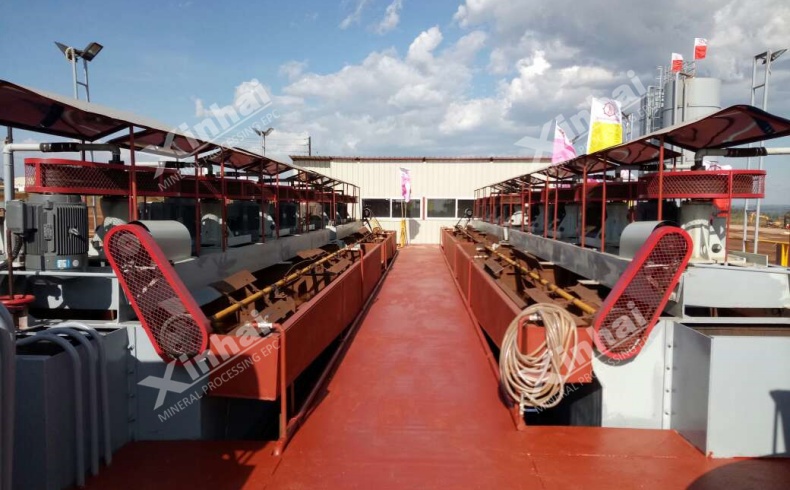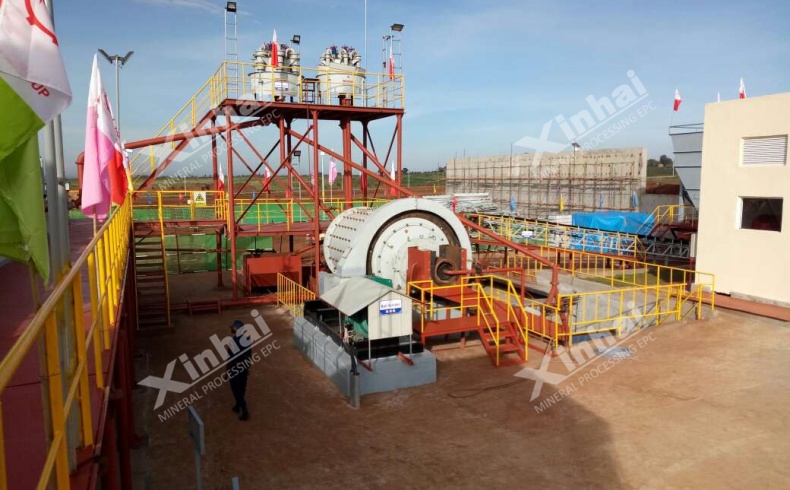If you want to know more information (such as product/process price, etc.), please contact us 24-hour telephone
The beneficiation of phosphate ore is a critical process to transform raw phosphate rock into high-grade concentrates for fertilizers, industrial chemicals, and food additives. With declining high-quality reserves and stricter environmental regulations, optimizing beneficiation of phosphate ore has become essential for miners worldwide. This article explores cutting-edge methods, challenges, and trends in phosphate processing, offering actionable insights to maximize recovery rates and minimize environmental footprints.

Flotation remains the cornerstone of beneficiation of phosphate ore, especially for complex ores. By modifying mineral surface properties, it separates phosphate minerals (e.g., apatite) from gangue (e.g., quartz, carbonates). Key flotation approaches include:
Direct Flotation: Collects phosphate minerals by depressing silicates/carbonates. Ideal for high-grade ores.
Reverse Flotation: Removes carbonates/silicates by depressing phosphates. Effective for ores with high impurity content.
Double Reverse Flotation: Combines two reverse flotation stages to treat low-grade ores (P₂O₅ <20%), achieving concentrates above 30% P₂O₅.
Direct-Reverse Flotation: First recovers phosphates, then removes remaining impurities. Suited for ores with mixed mineralogy.
Innovation Tip: XinhaiMining’s froth stabilizers and pH-controlled reagents enhance selectivity, reducing reagent consumption by 15%.
Gravity separation leverages density differences between phosphate minerals (2.9-3.2 g/cm³) and lighter gangue. Common technologies include:
Heavy Media Cyclones: Separate coarse particles using dense suspensions (e.g., ferrosilicon).
Jigging Machines: Recover fine-grained phosphates via pulsating water flow.
Application: Ideal for sedimentary phosphate deposits with distinct density contrasts, such as Morocco’s Khouribga mines.
Weathered or clay-bound phosphate ores require scrubbing to remove surface impurities. Key steps:
1. Attrition Scrubbing: Breaks down clay clusters using high-speed rotating paddles.
2. Desliming: Removes <75μm slimes via hydrocyclones to prevent downstream process interference.
Case Study: A Brazilian mine boosted P₂O₅ recovery by 22% after adopting XinhaiMining’s modular scrubbing-desliming unit.

For carbonate-rich ores (e.g., Florida’s “Bone Valley” deposits), calcination-digestion is vital:
1. Calcination: Heat ore to 900–1000°C to decompose carbonates (CaCO₃ → CaO + CO₂).
2. Digestion: Hydrate calcined ore to dissolve CaO/MgO, leaving purified phosphate.
Sustainability Note: XinhaiMining’s waste heat recovery systems reduce CO₂ emissions by 30% in this energy-intensive process.
Chemical methods dissolve impurities using acids or bases:
Sulfuric Acid Leaching: Extracts phosphoric acid directly from low-grade ores.
Ammonium Chloride Leaching: Selectively removes magnesium for premium-grade fertilizers.
Challenge: High reagent costs. Solution: XinhaiMining’s closed-loop reagent regeneration systems cut operational expenses by 40%.
1. Ore Characteristics: Mineral composition, grain size, and hardness dictate process selection.
2. Process Design: Tailored flowsheets (e.g., flotation + calcination) optimize recovery.
3. Reagent Strategy: pH modifiers, collectors, and depressants must align with ore chemistry.
1. Low-Grade Ore Utilization: Advanced froth flotation and sensor-based sorting for ores with P₂O₅ <15%.
2. Zero-Waste Systems: Convert phosphogypsum into construction materials or rare earth extracts.
3. AI-Driven Optimization: Machine learning models predict optimal reagent dosages in real time.
Conclusion
The beneficiation of phosphate ore is evolving rapidly to meet sustainability and efficiency demands. From AI-enhanced flotation to circular economy practices, innovation is key to unlocking value in low-grade and complex ores. As a leader in mineral processing, XinhaiMining delivers end-to-end EPCM+O solutions for beneficiation of phosphate ore—combining cutting-edge technology with decades of field expertise.
Explore our phosphate beneficiation solutions to elevate your project’s profitability and eco-performance.